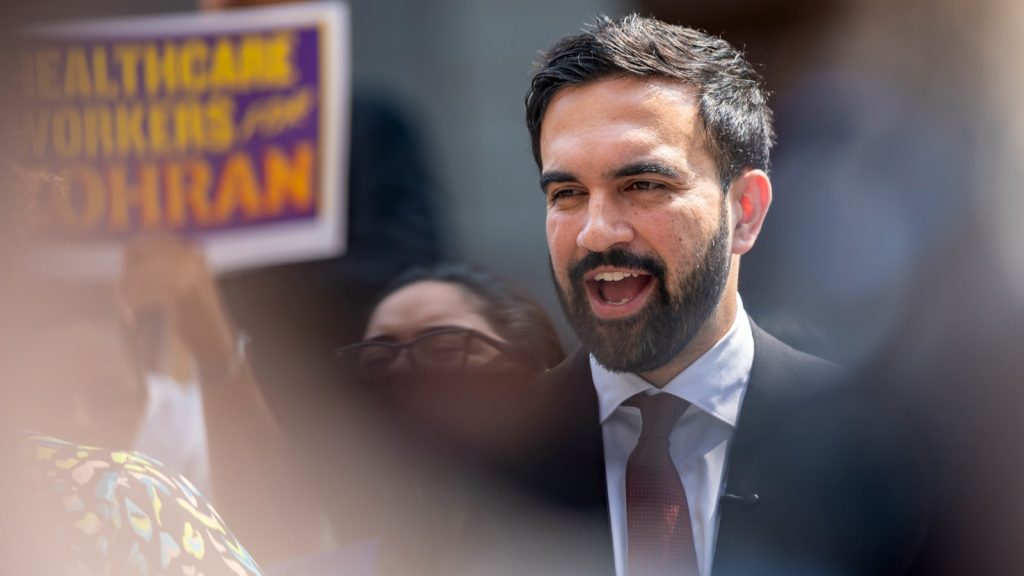Zohran Mamdani has the penthouse crowd aflutter. The Democratic mayoral nominee’s bold, simple plan to make New York affordable for everyday citizens — freeze the rents, make buses and child care free — would be funded by a meager two percent tax hike on New York’s millionaire class.
The ultra-wealthy squawked back with their usual empty threat: Raise their taxes and they’ll leave, taking their fortunes — and New York City’s tax base — with them. But the Big Apple didn’t become the richest city in the world overnight, and if tax flight were real, history and hard data would prove it. Instead, the record is clear: Higher taxes make millionaires flap their wings, not fly the coop.
Recently, Senator Elizabeth Warren threw a match into the nest. On CNBC, she swatted away a host’s hand-wringing about higher taxes on the wealthy: “Oh dear, are you worried that billionaires are going to go hungry?” Her point was unmistakable. No matter the noise, New York’s millionaires aren’t going anywhere. Why would they? Moving is undesirable, disruptive, and the very investments their taxes fund — from city parks to transit to cultural life — are exactly what makes New York City the capital of the world.
The evidence for millionaire tax flight is scant. If high earners were truly fleeing high taxes, low-tax states would be swarming with millionaires. Instead, the highest concentrations of millionaires are found in high-tax states like Connecticut, Maryland, and New Jersey. And in these states, taxes levied on the highest earners have been broadly successful, with Massachusett’s millionaire tax generating an additional $2 billion in revenue than expected in the last year alone.
And for all the doom and gloom about a mass exodus, when tax rates did increase, millionaire populations continued to climb.
In 2021, when New York increased personal income tax rates for millionaires, the state’s millionaire population grew by 21 percent. In neighboring New Jersey, when the state raised taxes on high earners in 2004, only 37 millionaires left the following year. That same year, 3,000 new millionaires were added to the state’s rolls. California’s 2005 millionaire tax hike had a similar effect: The millionaire population increased by 30 percent by 2007.
Hedge fund manager Bill Ackman has gone so far as to claim that just “a handful of successful people” leaving could decimate New York’s finances. In reality, it would require a significant share of the nearly 14,000 households in Manhattan alone earning $1 million or more annually to pack up and leave to make a dent.
However, millionaires are less mobile than everyone else, as only 2.4 percent of millionaires move across state lines each year, compared to 2.9 percent of the general population. In 2022, more than 65,000 New York State residents who made low-to-middle incomes left the state, over three times the rate of outbound migration for earners in the top one percent. And even when the wealthy do decamp, they typically trade one high-tax zip code for another, rather than retreat to a tax haven.
Millionaires rarely relocate, not because they can’t afford to, but because millionaires make decisions about where to live just like the rest of us do. Our decisions about where to reside are shaped far more by jobs, family, and quality of life than by tax rates. Surveys show that only nine percent of interstate movers cite tax-related reasons as a major factor. If New York millionaires were truly desperate to cut costs, they could make the far easier move from Manhattan to Jersey City or Hoboken, where the median home is nearly half the price. Few ever do, making it hard to believe they’d uproot their kids, abandon business networks, and trade New York’s unrivaled energy and access just to shave a few dollars off their tax bill.
It is possible that Ackman might make good on his threat to leave New York if taxes rise, but the data says he won’t have much company and will quickly be replaced. The choice for New York isn’t “tax the rich or lose them.” The wealthy are already there and multiplying. To truly decimate the City’s finances, millionaire flight would have to surge to levels we’ve never seen before, levels that similar tax hikes have never caused. In every real-world case, the tax dollars gained have dwarfed the dollars lost.
And history isn’t Mamdani’s only ally; policy is, too. Mamdani’s proposals would make the city more livable for working people while improving public goods — from transit to child care — that benefit everyone, including those footing a slightly higher tax bill.
After all, while billionaires may never ride a free city bus, they would be remiss to ignore that they, too, gain from a city that runs smoothly — one that’s safe, clean, and vibrant — because the everyday people who do ride those buses are exactly who keep New York thriving, and who sustain the fortunes they’re so desperate to protect.
Lindsay Owens is Executive Director of Groundwork Collaborative and author for the forthcoming book, Gouged (Viking Penguin). Nia Law is the Special Assistant and Research Associate at the Groundwork Collaborative and a graduate of Georgetown University.

